How do you choose which gourmet chocolate to use for your baking?
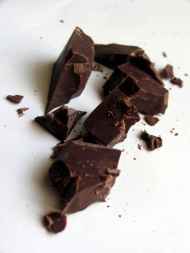
Gourmet chocolate, - at last it's the experience you've been waiting for, - an excuse for tasting chocolate!
Even when you are buying chocolate from top chocolatiers, how do you know that you have good quality chocolate, or, how do you really understand what you like and what you don't?
Here are some tips and ideas to help you decide who of the huge array of Chocolate Houses around, are your favourite chocolatiers. And which chocolate you want to use to create all your wonderful chocolate recipes, from making your own truffles to buying extra special gifts for your family and friends.
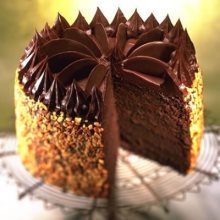
Reflect, what elements of the eating of chocolate really excite you? Is it the melting chocolate experience which you love? Chocolatiers around the world are constantly doing the same tasting, questioning, and analysing of gourmet chocolate. What have some of the best quality chocolatiers of the world found out about the mysterious and complex flavours of chocolate?
(Remember, we all have our own preferences; these tips are a guide for you to make your own choice.)
The elements that chocolatiers think about when wanting to understand what makes the finest chocolate gourmet experience include:
Appearance, touch, aroma, feel or snap, mouth-feel or texture, flavour and aftertaste.
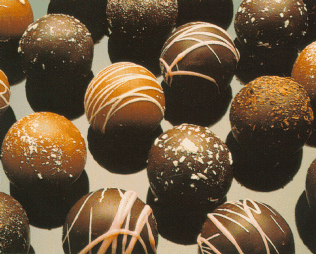
Each of these elements comes into play in various ways when choosing the chocolatier's chocolate that you want to use. The basic guideline to gourmet chocolate is that good quality chocolate ultimately relies on the quality of the cacao bean. Like wine, the bean type, the growing conditions, the soil and the annual weather influence the finished flavour of your chocolate recipe. The best chocolatiers will also follow the manufacturing process with care and time, to produce the highest quality chocolate.
Neither cocoa butter percentage, nor the percentage of cocoa solids guarantees the quality of your chocolate for your eating or baking results. But read how chocolate is made to get some idea of the variety of processes involved and the care taken with the quality beans used to make gourmet chocolate.
So, test the chocolate along the following criteria:
Appearance
The appearance should be evenly coloured, whether it is a mahogany brown, deep red, or black. Darker is not necessarily better, as a dark colour could mean the beans have been over-roasted. In fact, many top chocolatiers prefer to see a red hue to their chocolate (with dark chocolate), a rich flavour and well processed. Whatever the colour, the chocolate should be smooth without cracks, air-holes, streaks, blemishes or sugar bloom.
Touch
Chocolate should be silky to the touch, not sticky, and begin to melt if held between your fingers for a few seconds. Cocoa butter is solid at 33C, but melts at 34C. The speed of melting is an indicator of cocoa butter content, the better the quality the faster it melts.
Aroma
The smell of chocolate is a key part of the experience; it's where the taste experience starts. Sweetly chocolaty, with a well-balanced yet complex fragrance - if the chocolate is good quality. Scent flavours to note are vanilla, and tones of berry and caramel. If you smell any off-notes in the fragrance, be wary, there should be no sour notes.
Feel or snap
When you break off a piece of the chocolate, you can sense a lot about the quality of chocolate produced by the chocolatier. A clean snap, a snap with crispness, reveals that the cocoa butter quantity is high. Though not an indicator of chocolate taste quality, it does indicate if cheap vegetable fats have been used. Chocolate with a high level of added vegetable fats and other cheaper fats crumbles or splinters. It does not have the same clean "snap" that cocoa butter gives your chocolate, together with a distinctive tree-bark-like texture.
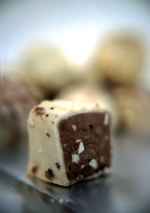
Mouth-feel or texture
This is what I think is amazing about chocolate - the melting explosion experience. It's due to the fact that cocoa butter has the same melting point as our own body temperature. No wonder we find chocolate a romantic and loving gift, when it melts with body heat.
However, if the chocolate does not start to melt straight away, then this is another indication that the chocolate is of a poorer quality. There should be an explosion of flavour, smooth, in fact the smoother the better. And buttery, a melting pool of rich creamy chocolate, with an undercurrent of the complex flavours that gourmet quality cacao beans give to gourmet chocolate.
It should not be grainy or gluey. If the chocolate is "waxy" or "clacky" it can indicate that vegetable fat has been substituted for cocoa butter. If the chocolate has a very high vegetable fat content, then it's not real chocolate.
I had an experience recently of tasting so called gourmet chocolate, but it had a waxy mouth-feel. Though I think people have become better informed about gourmet chocolate, some manufacturers are attempting to exploit this and think that all they have to do now is state on the wrapping paper a high cocoa solid percentage, and that will persuade us that it is good quality chocolate.
These companies market their chocolate as a dark "quality" chocolate, with a strong dark colour and flavour. But what they actually do is remove too much of the expensive cocoa butter, so the melting in the mouth experience is lost. Cocoa solids with hardly any cocoa butter - it's like eating cocoa powder!
Read those wrappers, but better still - do some tasting, as unfortunately, sometimes price is not a true indicator of real gourmet chocolate.
Flavour
Everybody has his or her own body chemistry. This affects how you taste chocolate, but essentially good quality chocolate has a bitter-sweetness, fruity - spicy, with a depth of sensual and subtle mellow flavours with a good balance of acidity and sweetness. The complex flavours are dependent on cacao bean quality, the way the beans were processed, and the skill of the blender, - and that is before it is made into the chocolate bar or the product you taste and bake with.
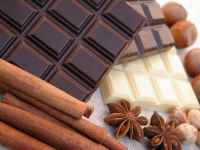
Aftertaste
Good quality chocolate leaves a clean but complex lingering taste in your mouth for many minutes, even up to half an hour or more later. Gourmet chocolate tasting is becoming similar to wine tasting, with clubs and groups offering chocolate tasting experiences.
And when the words used to describe chocolate include spicy, floral, earthy, dried grasses, fruity, cinnamon, walnut, caramel, smoky, wood notes, roasted coffee, berry, blackcurrant, tobacco, and citrus notes, you would be forgiven for thinking you were at a wine-tasting party!
So when making your chocolate recipes of cakes, desserts and all the other wonderful chocolate recipes that there are - which chocolatier's gourmet chocolate shall you use? Which chocolatiers do you like?
One more thing, but it is a very important thing: it depends where you live as to which gourmet chocolates you will have access to. Europe has its own tradition of chocolate making; America and Australia have theirs. So, the chocolate available to you is still greatly influenced by that fact.
For many top chocolatiers around the world French chocolate is considered the absolute pinnacle, with many wonderful chocolatiers based in Paris.
Meanwhile, to keep us going - here are some suggestions for quality chocolatiers as used by top gourmet chefs. These top quality couverture chocolate suppliers will give every recipe a professional rich chocolaty taste.
Valrhona
One of the most popular cooking and baking chocolatiers for gourmets and chefs around the world is Valrhona. They were the first chocolatiers to produce a "grand cru" - borrowing the idea from the highest quality wine growers - that the better the fruit, the better the final product will be. And Valrhona has certainly proven that with their chocolate in their excellent range available.
The range now covers Guanaja 70%, Caraibe 64%, Manjari 64% and Jivara, a 40% milk chocolate.
With the best cacao trees and beans from the best growing areas around the world, Valrhona gives attention to the subtle and unique flavours contained within their single source and specially blended gourmet chocolate range. With each product processed using the highest quality methods, Valrhona have done a lot to supply and promote quality chocolate around the world.
Try Valrhona when making your wonderful homemade truffles.
Cacao Barry
The company Barry Callebaut is one of the world's largest chocolate manufacturers, supplying other manufacturers, and directly supplying premium chocolate 'Cacao Barry' to chefs, master bakers, chocolatiers and cooks. This major chocolatier produces fine quality gourmet chocolate for great baking and eating results.
Great for making your rich moist chocolate cake recipes.
There are more gourmet chocolate makers, of course, and here are a couple more that are worth mentioning: La Chocolaterie de l'Opera is one; Lindt is another widely available gourmet chocolate for baking, and gives a good and rich smooth-flavoured result with its chocolate, which lends itself very well to my chocolate mousse recipes.
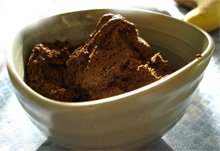
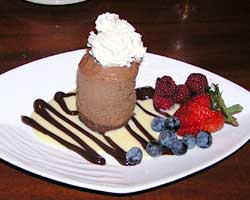
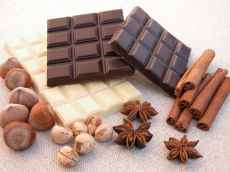
Link from gourmet chocolate to best chocolate recipes online home page.
